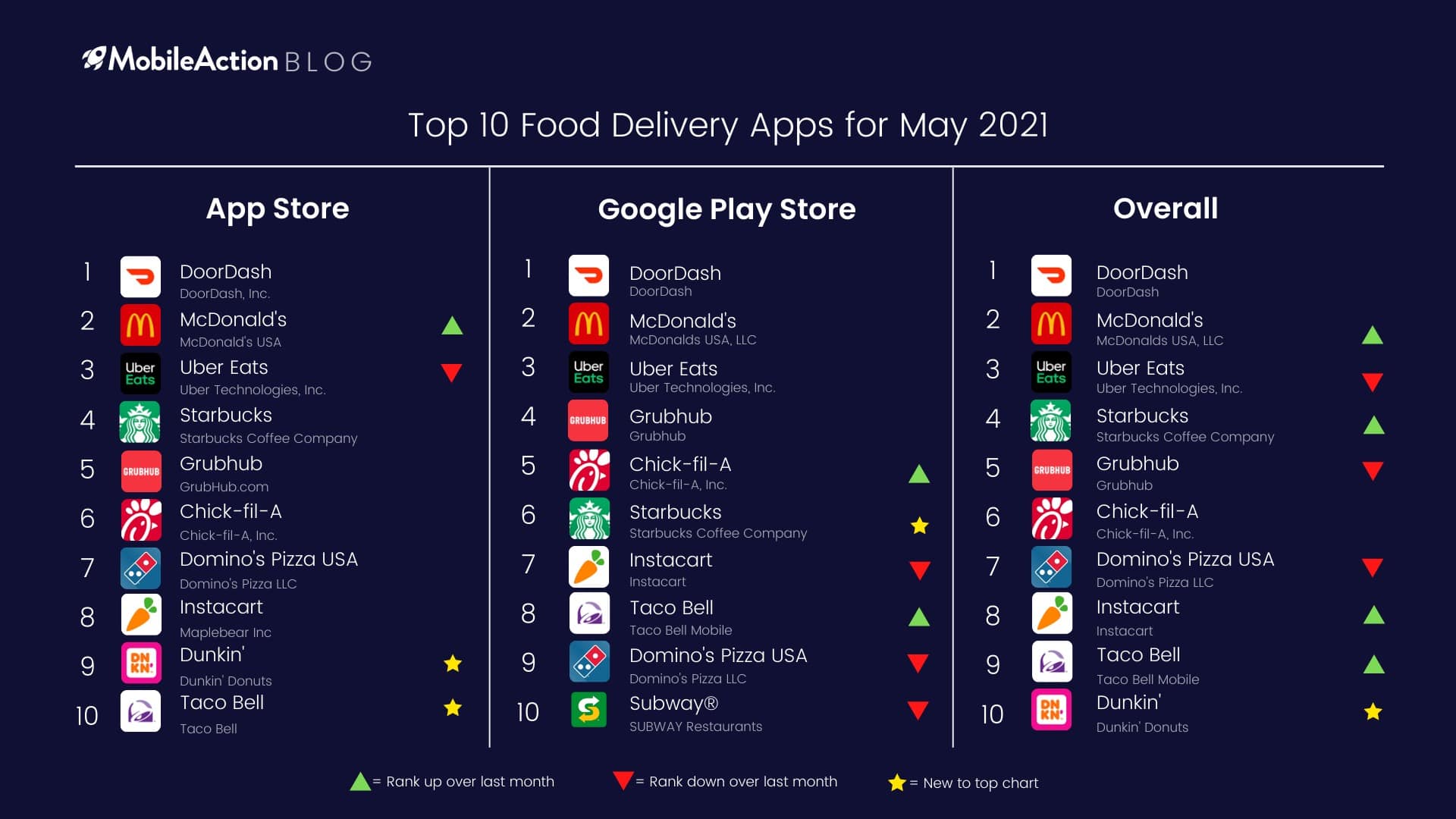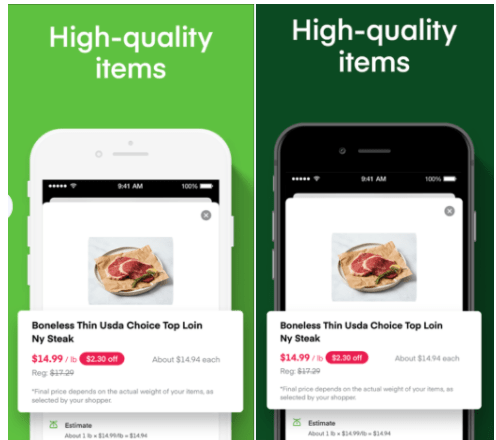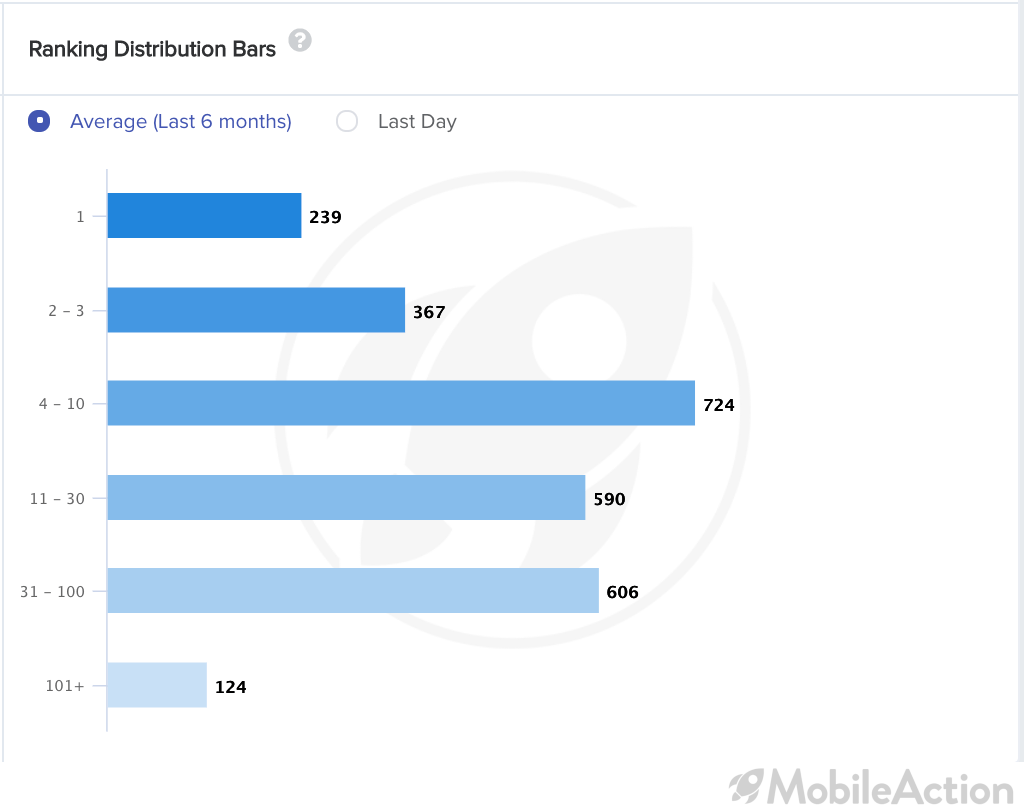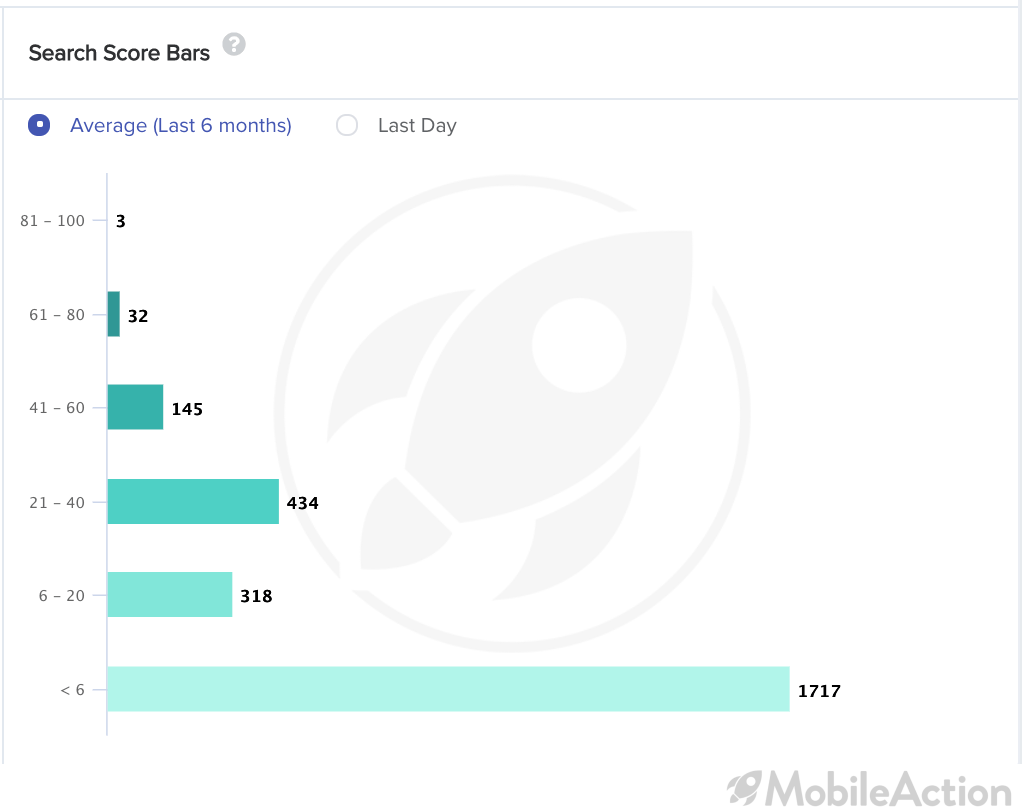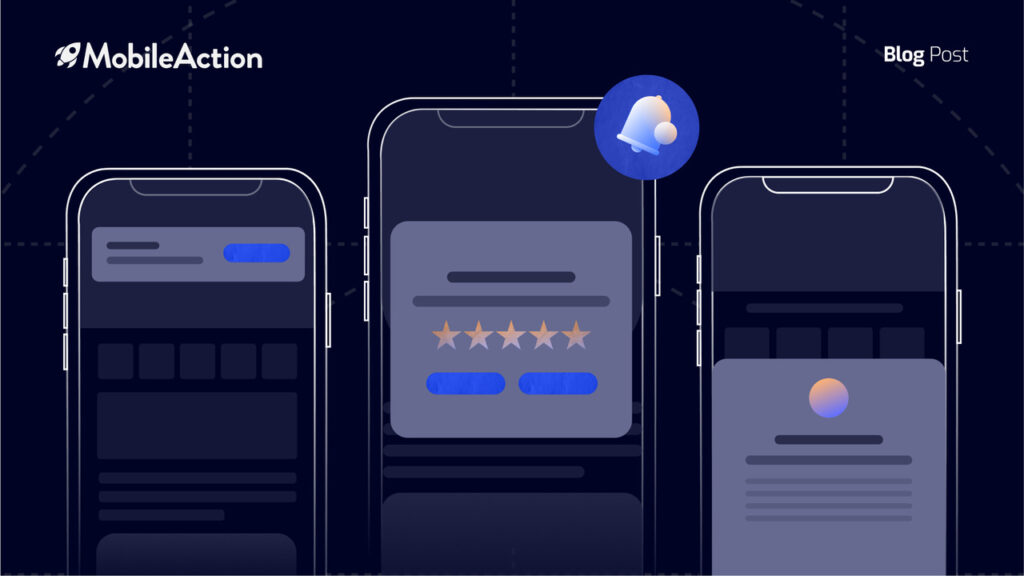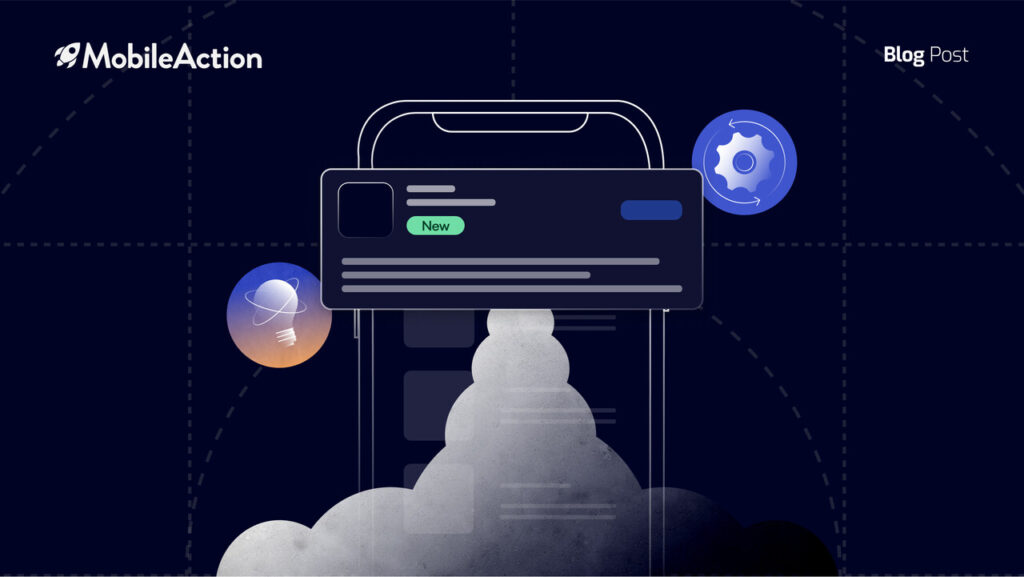Being able to order your groceries or food online is a huge convenience. Especially since the pandemic, food delivery apps became much more popular and competitive since the demand increased greatly for such apps. In this article, we took a look at the top 10 food delivery apps in the US.
As we come closer to the end of the pandemic, it doesn’t seem like people will let go of their newly gained habits. It is interesting to track the different strategies that the top 10 food delivery apps use to grow their business in order to be able to keep up with the market.
Amongst the top 10 food delivery apps, we can see that DoorDash is still leading the overall charts. We can also see the presence of big brand names such as Starbucks, McDonald’s, and Uber Eats. In addition to food delivery apps, a more recent trend is instant grocery deliveries. Instacart is such an app that found its place in the top charts. Now let’s dive into the mobile user acquisition strategies of these apps and try to gather some insights.
Instacart
Even though Instacart is not a new app, it has been increasing its popularity greatly in the last year. When it comes to how to market an app, we always emphasize the importance of a comprehensive app marketing strategy, where different channels are utilized. One reason behind Instacarts’ success appears to be their exhaustive approach to app marketing.

Instacart has a very good visibility score, which indicates a strong App Store Optimization approach. The app is also active on Apple Search Ads in the US while also utilizing traditional mobile ad networks to distribute its creative content.
When it comes to Apple Search Ads, we can easily see a difference between Instacart and competitors. Instacart appears to focus on low popularity, low competition keywords and get most of the impressions from them.

We found nearly 100 keywords that have a popularity score of less than 20 for which Instacart receives more than 70% of impressions using Search Ads Intelligence. Additionally, Instacart is very protective of its brand name, making sure that it is hard for competitors to get impressions using their brand keyword.

As a local service app, Instacart seems to only use Facebook channels to distribute their ads.
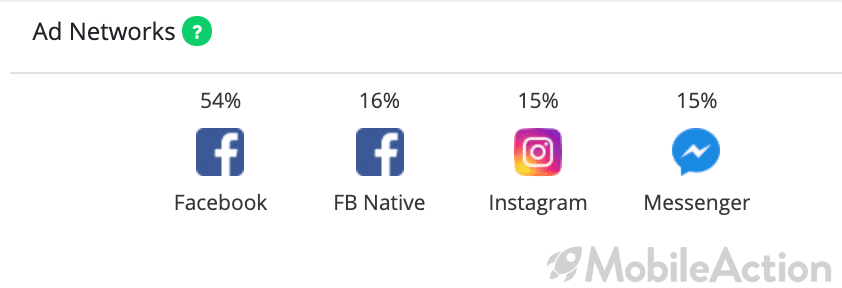
This is to be expected as they have to reach relevant audiences within certain areas. However with the deprecation of IDFA, reaching specific audiences will become harder for app marketers. We might expect to see an increase in the use of Apple Search Ads for app user acquisition especially in apps such as Instacart.
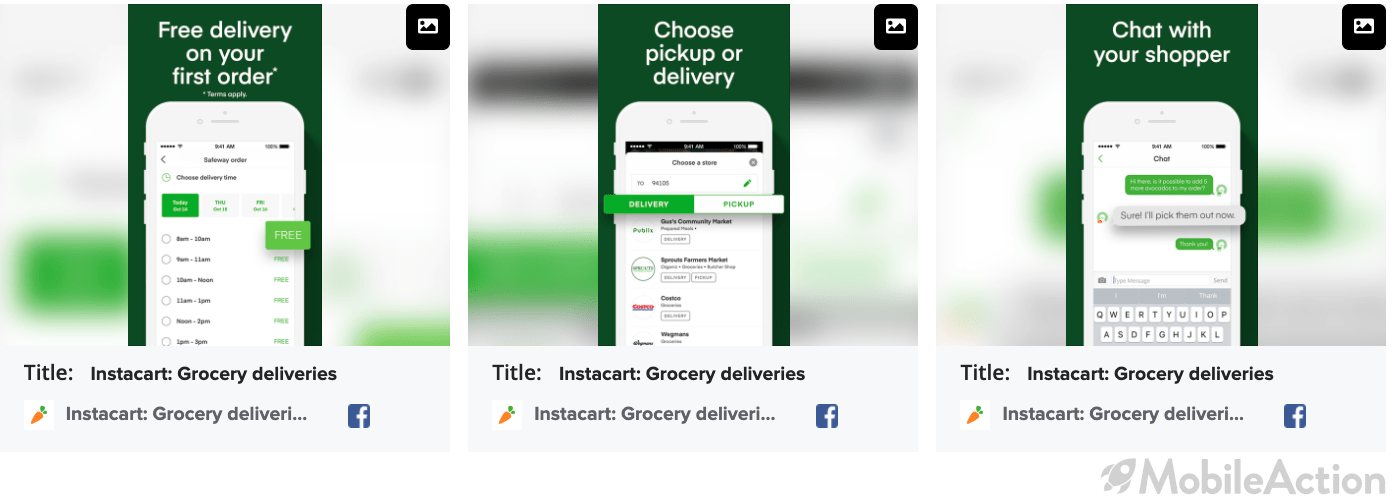
One great way to attract new users to your app is offering a first time free coupon. Using Mobile Ad Intelligence, we can see that creatives where they promise a free first delivery received the most impressions.
It appears that Instacart is also conducting A/B testing to find better performing creatives. Through this overall effective app marketing strategy, Instacart has earned its place among the top charts. It will be interesting to observe how they will keep adapting their efforts.
Grubhub
Similar to DoorDash, Grubhub is also a local food delivery service. The first thing that we notice when we check their strategy is their emphasis on App Store Optimization. Grubhub seems to focus on increasing its visibility score to grow their user base.

With a visibility score of 88, it is very easy to come across Grubhub when searching for food ordering apps. They are currently ranking organically for 2666 keywords. However, the total number of ranked keywords is not the sole driver for ASO and growth. Targeting relevant keywords and ranking rather high is the main driver of organic downloads.
In the last 6 months, we can see that Grubhub ranked first to third on nearly 600 keywords on average. This means that Grubhub usually appears on the first page of the search results, capturing the first look of users. If these keywords are selected based on user-intent, we can expect to see a lot of organic downloads generated from non-brand keywords.
When we sort their ASO strategy according to the volumes of the keywords they are ranking on, we can clearly see that Grubhub is targeting low popularity keywords. Such keywords (especially long-tail ones) usually indicate higher user intent. Grubhub clearly uses this method in their strategy.
Organic Downloads
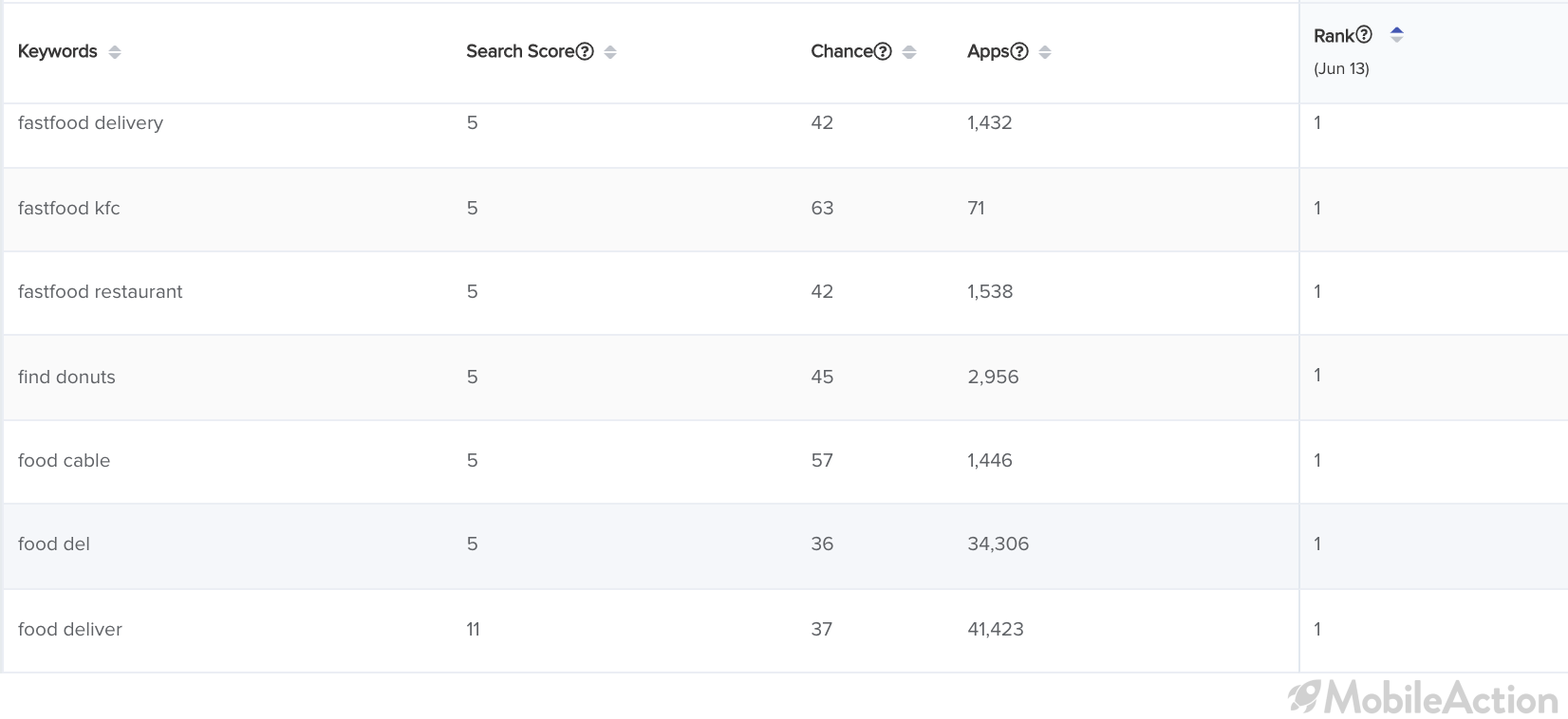
Through their ASO report we can confirm our prior observations. Notice how Grubhub is targeting keywords with lower competition and higher user intent. By ranking 1st for tons of these keywords, they are able to bring in organic traffic.
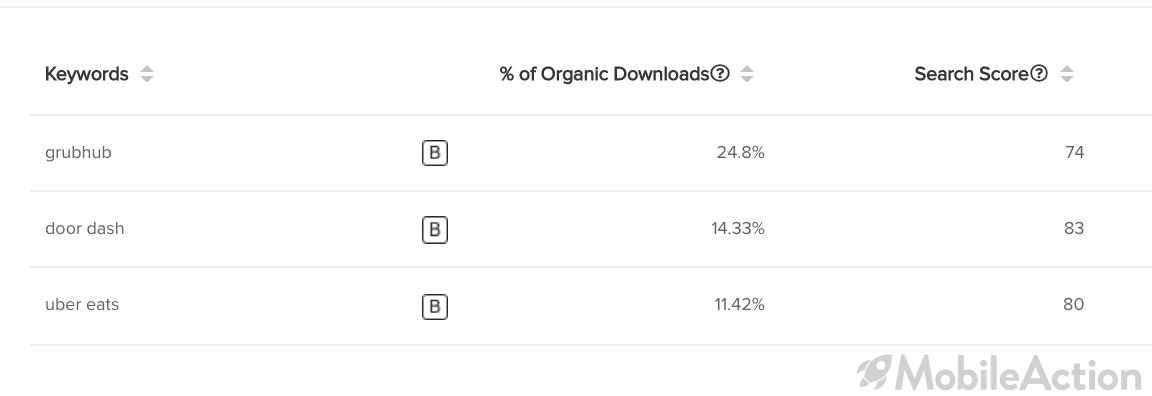
Through Keyword Intelligence we can see that nearly 50% of their organic downloads are generated by non-brand generic keywords. Such a strategy can be really effective especially for apps who do not have a strong brand name.
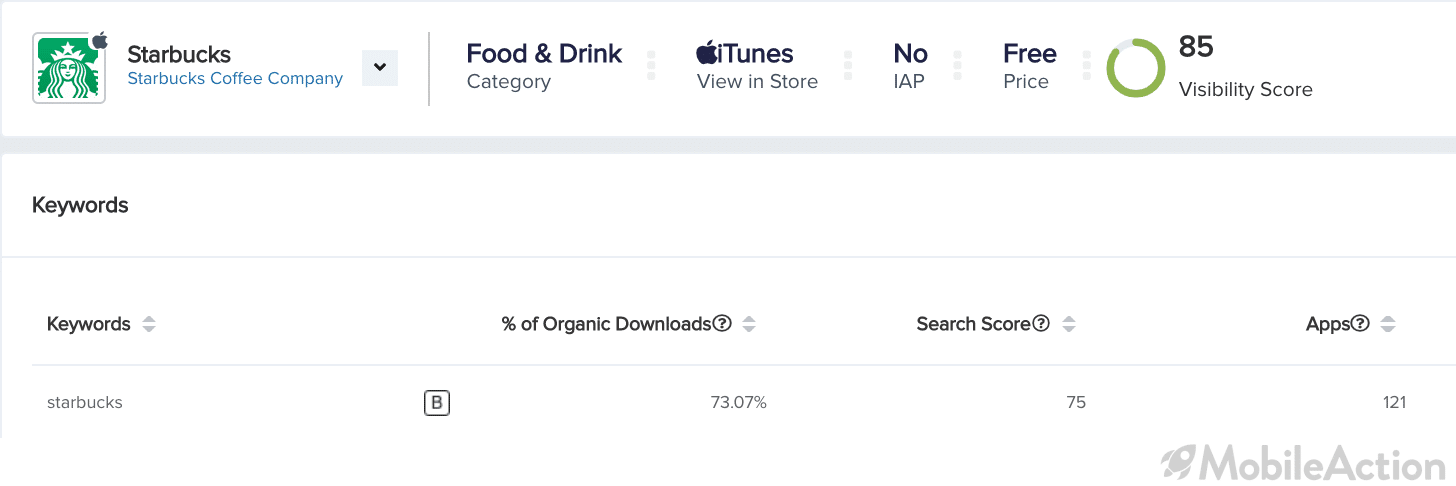
For example, Starbucks receives nearly 75% of organic downloads from their brand name alone.
In this article we examined two different app marketing strategies. While Instacart uses a comprehensive, diversified approach, Grubhub seems to succeed with a solid App Store Optimization strategy. Grubhub once again proves that a solid ASO effort can carry your app to success.
With the removal of the IDFA, it will be interesting to see how these apps will modify their strategies. As local delivery apps rely on personalized ads, Apple Search Ads will surely become more prominent in their mobile user acquisition strategies. If you would like to learn more about ASO and enhance your app marketing strategy, schedule a demo with our experts today!
